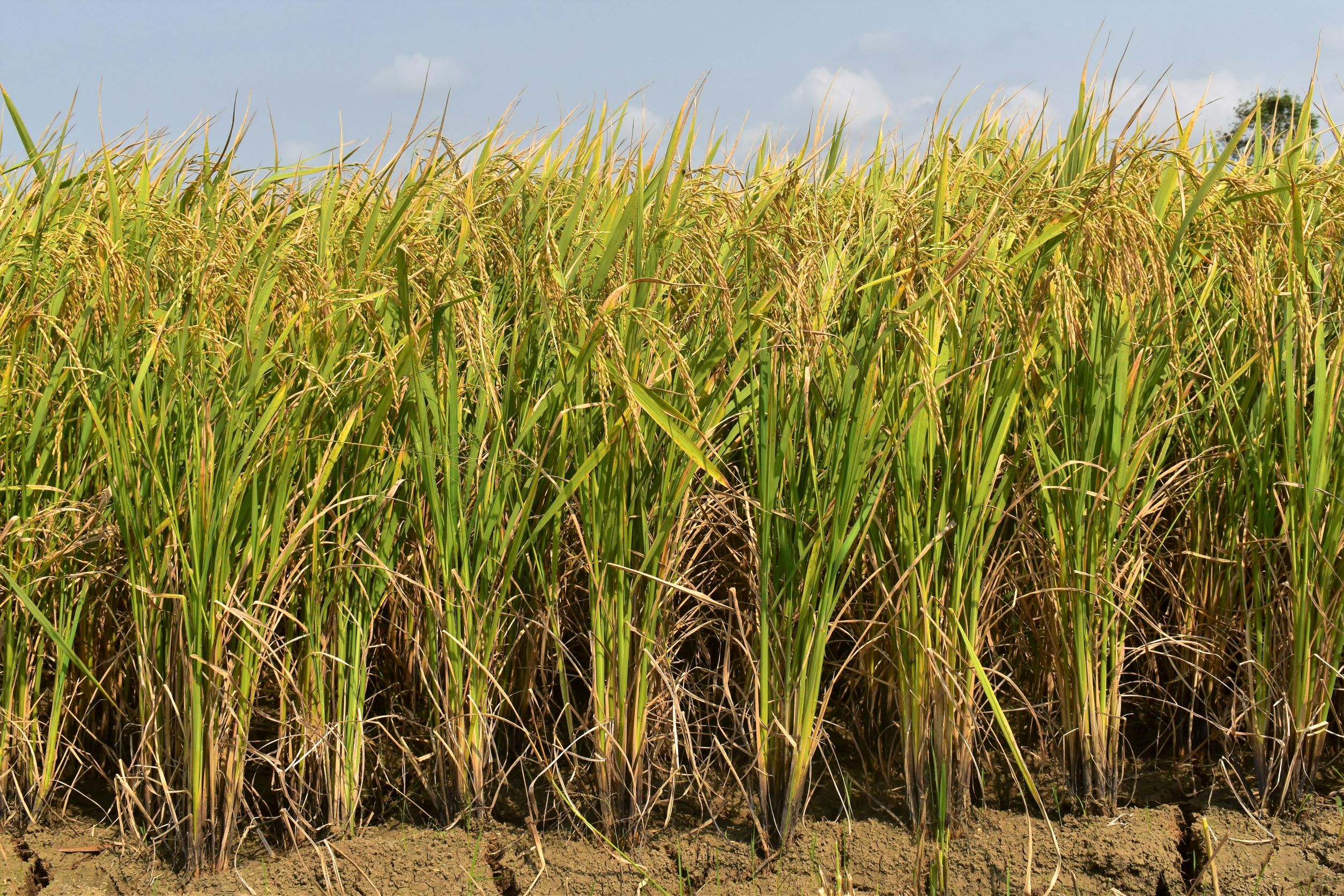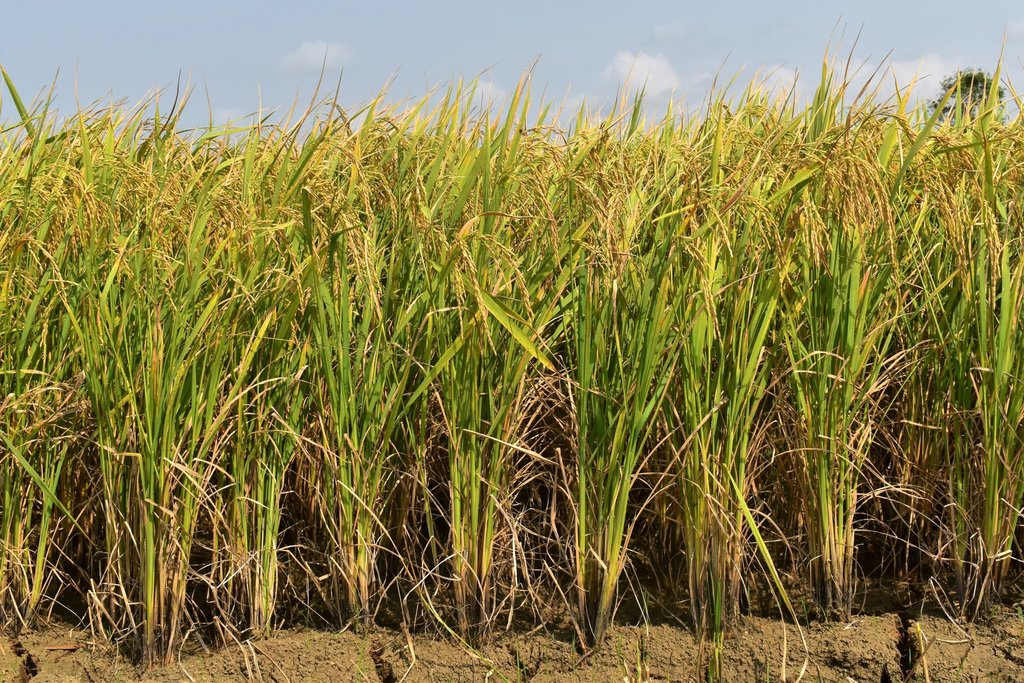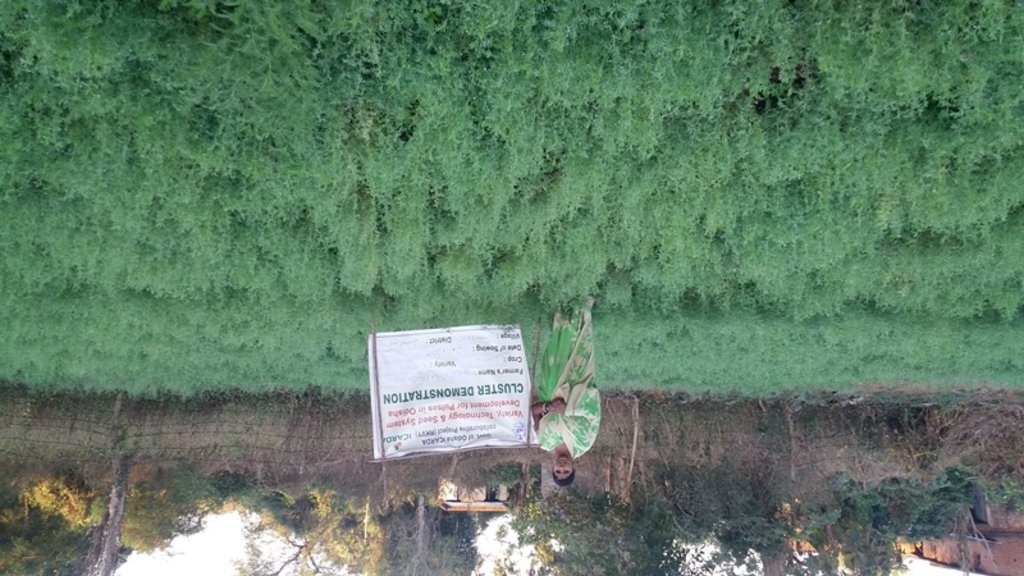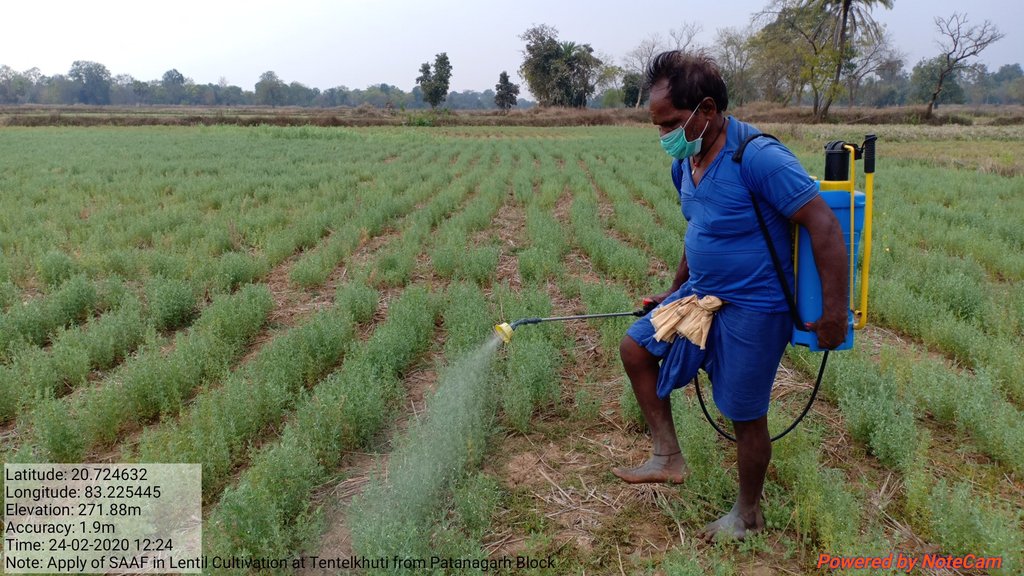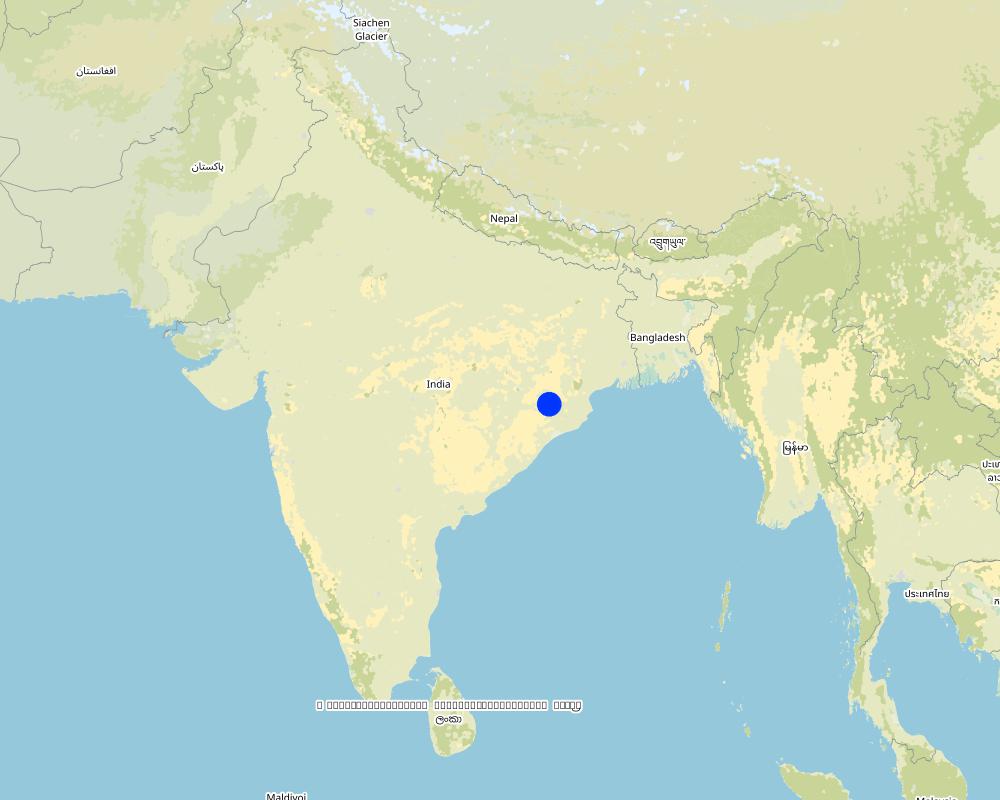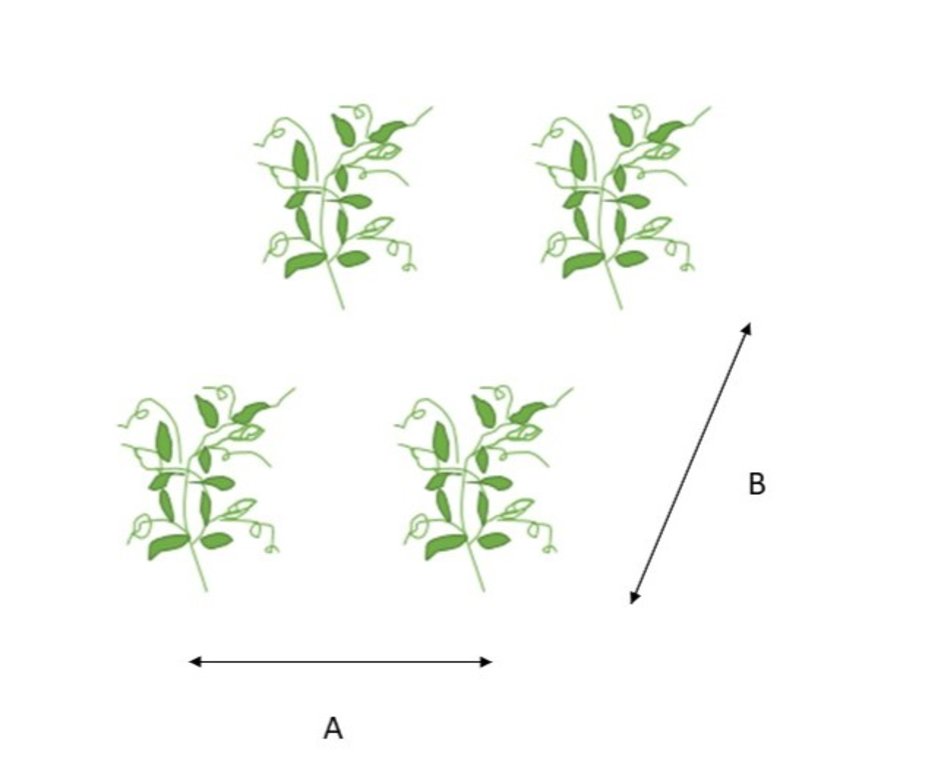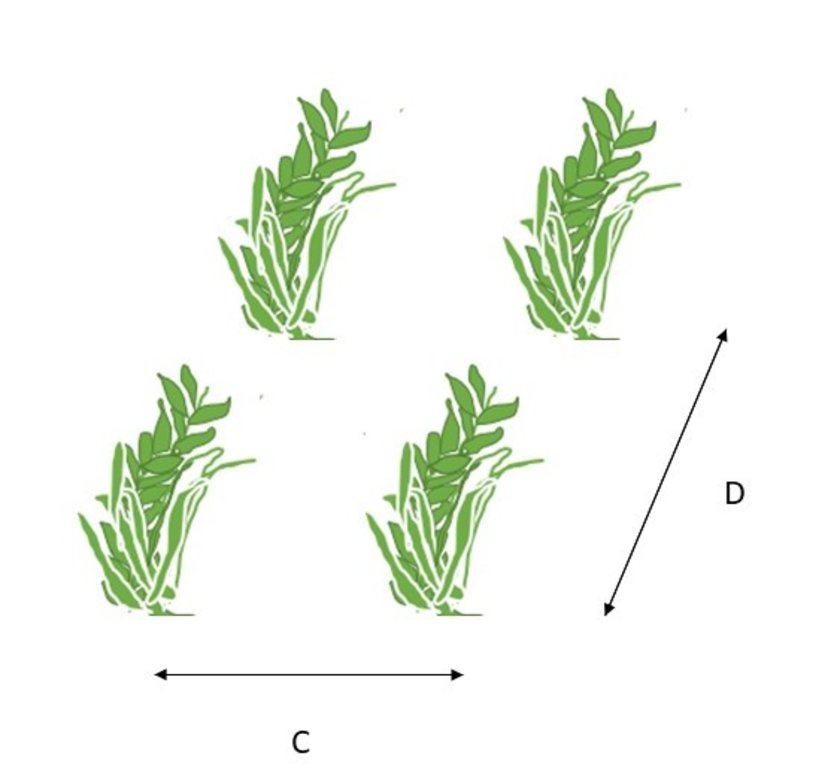Legumes in rice-based cropping systems [印度]
- 创建:
- 更新:
- 编制者: Joren Verbist
- 编辑者: –
- 审查者: William Critchley, Rima Mekdaschi Studer
technologies_6489 - 印度
查看章节
全部展开 全部收起1. 一般信息
1.2 参与该技术评估和文件编制的资源人员和机构的联系方式
关键资源人
Agricultural Economist:
Swain Nigamananda
International Center of Agriculture Research in the Dry Areas (ICARDA)
印度
Lentil Breeder:
Reena Mehra
International Center of Agriculture Research in the Dry Areas (ICARDA)
印度
有助于对技术进行记录/评估的项目名称(如相关)
ICARDA Institutional Knowledge Management Initiative有助于对技术进行记录/评估的机构名称(如相关)
International Center for Agricultural Research in the Dry Areas (ICARDA) - 黎巴嫩1.3 关于使用通过WOCAT记录的数据的条件
编制者和关键资源人员接受有关使用通过WOCAT记录数据的条件。:
是
1.4 所述技术的可持续性声明
这里所描述的技术在土地退化方面是否存在问题,导致无法被认为是一种可持续的土地管理技术?:
否
2. SLM技术的说明
2.1 技术简介
技术定义:
In India, 29 percent of the area cropped with rice remains fallow during the dry "rabi" season. This offers the opportunity to improve farm income and soil health by introducing legumes especially lentils. Diversifying the cropping system in such a way results in higher farm income due to additional crop produce and reduced carbon and water footprints.
2.2 技术的详细说明
说明:
In India, monsoon-season “kharif” rice is usually grown between June and November, while in the dry winter “rabi” season (from November to February), farmers keep these lands fallow due to lack of irrigation. Another constraint is a suitable crop with available seed for such a short window. Given the World Health Organization’s recommended pulse (legume grain) consumption of 50 g per capita per day, Odisha state needs to produce more. Here, legumes are grown on approximately 2.1 million hectares and total pulse production is 1.06 million tonnes. This results in an annual deficit of 0.22 million tonnes of pulses and a per capita per day consumption of only 11-23 grams. Odisha is exploring the vast potential for fallow cultivation of legumes.
The International Center for Agricultural Research in the Dry Areas (ICARDA) recognised this challenge and tested the introduction of lentils during the fallow rabi period. This resulted in a diversified cropping system as demonstrated in the following case study from the interior of Odisha, which is hilly with a cool winter season. Rice is the most commonly cultivated crop. The climate (1000-1500 mm of annual rainfall) and loamy-silty soil is suitable for lentils (Lens culinaris) - especially short duration varieties that can grow residual moisture of the rice.
During the 2018-2021 seasons, the lentil-rice cropping system was demonstrated on 165 ha of farmers’ fields involving 1920 farmers. The average yield of lentils was 790 kg/ha which generates traditional net-farm income of around 200 USD/hectare. Lentils have proved to have good potential: rice yields are not reduced and hence, from a cost-benefits perspective, it is a very viable option. Therefore, the state government is now promoting lentils as a fallow crop in rice-based systems in hilly areas with a cool winter season.
Lentil cultivation is as follows. Firstly, lentils are seeded (40 kg/ha) in the second week of November at a spacing of 30 x 5 cm. 3.5 kilogram of biocides (fungicides, herbicides, and pesticides) per ha are required and 50 kilogram of NPK fertilizer per ha is applied. Manual weeding takes around 20 person-days per ha. The lentils are harvested in February, requiring around 15 person-days per ha. Family labour provides for just over half of the field operations and a quarter of the harvest.
To conclude, growing lentils in the fallow period of rice-based cropping systems offers an opportunity to formulate a more climate resilient cropping system that improves soil health and farm income. This also has positive impact on health due to the inclusion of more pulses in the diet.
Data presented is from the bilateral project on pulses development funded by the Department of Agriculture & Farmers Empowerment, Government of Odisha with financial support from RKVY during 2018-2021 and implemented in collaboration with ICARDA. The work acknowledges the contribution of all scientists and team members in the ICARDA India programme: in the field and at headquarters.
2.3 技术照片
2.5 已应用该技术的、本评估所涵盖的国家/地区/地点
国家:
印度
区域/州/省:
Odisha
具体说明该技术的分布:
- 均匀地分布在一个区域
如果不知道精确的区域,请注明大致覆盖的区域:
- 1-10 平方千米
技术现场是否位于永久保护区?:
否
Map
×2.6 实施日期
注明实施年份:
2018
2.7 技术介绍
详细说明该技术是如何引入的:
- 在实验/研究期间
- 通过项目/外部干预
3. SLM技术的分类
3.1 该技术的主要目的
- 改良生产
- 减少、预防、恢复土地退化
- 适应气候变化/极端天气及其影响
- 创造有益的经济影响
- 创造有益的社会影响
3.2 应用该技术的当前土地利用类型
同一土地单元内混合使用的土地::
否

农田
- 一年一作
年作 - 具体指明作物:
- 谷类 - 水稻(湿地)
- legumes and pulses - lentils
每年的生长季节数:
- 2
采用间作制度了吗?:
否
采用轮作制度了吗?:
是
如果是,请具体说明:
Rice: July- November;
Lentil: Nov-February
3.3 由于技术的实施,土地使用是否发生了变化?
由于技术的实施,土地使用是否发生了变化?:
- 否(继续问题3.4)

农田
- 一年一作
年作 - 具体指明作物:
- 谷类 - 水稻(湿地)
3.4 供水
该技术所应用土地的供水:
- 混合雨水灌溉
3.5 该技术所属的SLM组
- 轮作制度(轮作、休耕、轮垦)
- 改良的地面/植被覆盖
- 改良植物品种/动物品种
3.6 包含该技术的可持续土地管理措施

农艺措施
- A1:植被和土壤覆盖层
- A5:种子管理,改良品种
- A6:残株管理
3.7 该技术强调的主要土地退化类型

化学性土壤退化
- Cn:肥力下降和有机质含量下降(非侵蚀所致)

生物性退化
- Bc:植被覆盖的减少
- Bq:数量/生物量减少
3.8 防止、减少或恢复土地退化
具体数量名该技术与土地退化有关的目标:
- 防止土地退化
- 减少土地退化
4. 技术规范、实施活动、投入和成本
4.1 该技术的技术图纸
技术规范(与技术图纸相关):
Lentil:
The plant to plant distance within a row (A) = 10 centimeters
The row to row distance (B) = 30 centimeters
作者:
Reena Mehra
日期:
2022
技术规范(与技术图纸相关):
Rice:
The plant to plant distance within a row (A) = 15 centimeters
The row to row distance (B) = 15 centimeters
作者:
Reena Mehra
日期:
2022
4.2 有关投入和成本计算的一般信息
具体说明成本和投入是如何计算的:
- 每个技术区域
注明尺寸和面积单位:
1 hectare of lentil cultivation
其它/国家货币(具体说明):
Indian rupee
如相关,注明美元与当地货币的汇率(例如1美元=79.9巴西雷亚尔):1美元=:
80.0
4.5 维护/经常性活动
| 活动 | 时间/频率 | |
|---|---|---|
| 1. | Lentil: Seeding | Second week November |
| 2. | Lentil: Fungicide | First week January |
| 3. | Lentil: Herbicide | Second week December |
| 4. | Lentil: Fertilizer | January |
| 5. | Lentil: Weeding | |
| 6. | Lentil: Harvest | February |
| 7. | Rice: Seeding | First week of June |
| 8. | Rice: Irrigation | June |
| 9. | Rice: Fertilizer 1 | Directly after seeding |
| 10. | Rice: Fertilizer 2 | 15 days after seeding |
| 11. | Rice: Fertilizer 3 | 90 days after seeding |
| 12. | Rice: Weeding | |
| 13. | Rice: Harvest | November |
4.6 维护/经常性活动所需要的费用和投入(每年)
| 对投入进行具体说明 | 单位 | 数量 | 单位成本 | 每项投入的总成本 | 土地使用者承担的成本% | |
|---|---|---|---|---|---|---|
| 劳动力 | Lentil: Weeding | Person-hour | 20.0 | 300.0 | 6000.0 | |
| 劳动力 | Lentil: Harvest | Person-hour | 15.0 | 300.0 | 4500.0 | |
| 劳动力 | Rice: Weeding | Person-hour | 6.0 | 300.0 | 1800.0 | |
| 劳动力 | Rice: Harvest | Person-hour | 15.0 | 300.0 | 4500.0 | |
| 设备 | Lentil: Zero-Seeder | Machine-hour | 2.5 | 1200.0 | 3000.0 | |
| 设备 | Lentil: Sprayer | Machine-hour | 1.0 | 300.0 | 300.0 | |
| 设备 | Rice: Tractor for land preparation | Machine-hour | 1.0 | 1200.0 | 1200.0 | |
| 设备 | Rice: Tractor for transplantation | Machine-hour | 5.0 | 1200.0 | 6000.0 | |
| 植物材料 | Lentil: Seed | Kilogram | 45.0 | 105.0 | 4725.0 | |
| 植物材料 | Rice: Seed | Kilogram | 25.0 | 30.0 | 750.0 | |
| 肥料和杀菌剂 | Lentil: Fungicide | Kilogram | 0.5 | 600.0 | 300.0 | |
| 肥料和杀菌剂 | Lentil: Herbicide | Liter | 1.5 | 367.0 | 550.5 | |
| 肥料和杀菌剂 | Lentil: NPK-fertilizer | Kilogram | 0.5 | 150.0 | 75.0 | |
| 肥料和杀菌剂 | Rice: Gromor (first application) | Kilogram | 5.0 | 40.0 | 200.0 | |
| 肥料和杀菌剂 | Rice: DAP (first application) | Kilogram | 100.0 | 35.0 | 3500.0 | |
| 肥料和杀菌剂 | Rice: Potash (2:1 -> first and third application) | Kilogram | 90.0 | 40.0 | 3600.0 | |
| 肥料和杀菌剂 | Rice: Urea (2:1 -> second and third application) | Kilogram | 90.0 | 10.0 | 900.0 | |
| 其它 | Rice: Irrigation after seeding | Liter | 3.0 | 100.0 | 300.0 | |
| 其它 | Rice: Irrigation in maturity (if needed) | Liter | 10.0 | 100.0 | 1000.0 | |
| 其它 | Rice: Transplantation | Person-hour | 19.0 | 300.0 | 5700.0 | |
| 其它 | Rice: Fertilizer | Person-hour | 6.0 | 300.0 | 1800.0 | |
| 技术维护所需总成本 | 50700.5 | |||||
| 技术维护总成本,美元 | 633.76 | |||||
5. 自然和人文环境
5.1 气候
年降雨量
- < 250毫米
- 251-500毫米
- 501-750毫米
- 751-1,000毫米
- 1,001-1,500毫米
- 1,501-2,000毫米
- 2,001-3,000毫米
- 3,001-4,000毫米
- > 4,000毫米
农业气候带
- 潮湿的
5.2 地形
平均坡度:
- 水平(0-2%)
- 缓降(3-5%)
- 平缓(6-10%)
- 滚坡(11-15%)
- 崎岖(16-30%)
- 陡峭(31-60%)
- 非常陡峭(>60%)
地形:
- 高原/平原
- 山脊
- 山坡
- 山地斜坡
- 麓坡
- 谷底
垂直分布带:
- 0-100 m a.s.l.
- 101-500 m a.s.l.
- 501-1,000 m a.s.l.
- 1,001-1,500 m a.s.l.
- 1,501-2,000 m a.s.l.
- 2,001-2,500 m a.s.l.
- 2,501-3,000 m a.s.l.
- 3,001-4,000 m a.s.l.
- > 4,000 m a.s.l.
说明该技术是否专门应用于:
- 不相关
5.3 土壤
平均土层深度:
- 非常浅(0-20厘米)
- 浅(21-50厘米)
- 中等深度(51-80厘米)
- 深(81-120厘米)
- 非常深(> 120厘米)
土壤质地(表土):
- 中粒(壤土、粉土)
土壤质地(地表以下> 20厘米):
- 中粒(壤土、粉土)
表土有机质:
- 中(1-3%)
5.4 水资源可用性和质量
地下水位表:
5-50米
地表水的可用性:
匮乏/没有
水质(未处理):
不良饮用水(需要处理)
水质请参考::
地下水
水的盐度有问题吗?:
否
该区域正在发生洪水吗?:
是
规律性:
偶然
5.5 生物多样性
物种多样性:
- 低
栖息地多样性:
- 低
5.6 应用该技术的土地使用者的特征
定栖或游牧:
- 定栖的
生产系统的市场定位:
- 混合(生计/商业)
非农收入:
- 低于全部收入的10%
相对财富水平:
- 贫瘠
个人或集体:
- 个人/家庭
机械化水平:
- 手工作业
- 机械化/电动
性别:
- 女人
- 男人
土地使用者的年龄:
- 中年人
5.7 应用该技术的土地使用者使用的平均土地面积
- < 0.5 公顷
- 0.5-1 公顷
- 1-2 公顷
- 2-5公顷
- 5-15公顷
- 15-50公顷
- 50-100公顷
- 100-500公顷
- 500-1,000公顷
- 1,000-10,000公顷
- > 10,000公顷
这被认为是小规模、中规模还是大规模的(参照当地实际情况)?:
- 小规模的
5.8 土地所有权、土地使用权和水使用权
土地所有权:
- 个人,未命名
- 个人,有命名
土地使用权:
- 个人
用水权:
- 社区(有组织)
土地使用权是否基于传统的法律制度?:
是
5.9 进入服务和基础设施的通道
健康:
- 贫瘠
- 适度的
- 好
教育:
- 贫瘠
- 适度的
- 好
技术援助:
- 贫瘠
- 适度的
- 好
就业(例如非农):
- 贫瘠
- 适度的
- 好
市场:
- 贫瘠
- 适度的
- 好
能源:
- 贫瘠
- 适度的
- 好
道路和交通:
- 贫瘠
- 适度的
- 好
饮用水和卫生设施:
- 贫瘠
- 适度的
- 好
金融服务:
- 贫瘠
- 适度的
- 好
6. 影响和结论性说明
6.1 该技术的现场影响
社会经济效应
生产
作物生产
注释/具体说明:
Due to an additional crop
作物质量
生产故障风险
注释/具体说明:
Additional crops reduces overall failure
产品多样性
土地管理
注释/具体说明:
The additional crop requires additional management
水资源可用性和质量
灌溉用水需求
收入和成本
农业投入费用
注释/具体说明:
the additional inputs for lentil imply extra expenses
农业收入
注释/具体说明:
lentil harvest increase overall farm income
收入来源的多样性
工作量
注释/具体说明:
cultivation lentils requires more workload
社会文化影响
食品安全/自给自足
健康状况
注释/具体说明:
pulses are recommended for a healthy diet
生态影响
土壤
土壤覆盖层
注释/具体说明:
lentils provide prolonged soil cover
养分循环/补给
注释/具体说明:
legumes fix nitrogen in the soil
6.2 该技术的场外影响已经显现
水资源可用性
注释/具体说明:
lentils use the residual water, preventing it from going to the groundwater
6.3 技术对渐变气候以及与气候相关的极端情况/灾害的暴露和敏感性(土地使用者认为的极端情况/灾害)
渐变气候
渐变气候
| 季节 | 增加或减少 | 该技术是如何应对的? | |
|---|---|---|---|
| 年降雨量 | 减少 | 不好 |
气候有关的极端情况(灾害)
气象灾害
| 该技术是如何应对的? | |
|---|---|
| 局地暴雨 | 好 |
气候灾害
| 该技术是如何应对的? | |
|---|---|
| 干旱 | 不好 |
6.4 成本效益分析
技术收益与技术建立成本相比如何(从土地使用者的角度看)?
短期回报:
非常积极
长期回报:
非常积极
技术收益与技术维护成本/经常性成本相比如何(从土地使用者的角度看)?
短期回报:
积极
长期回报:
积极
6.5 技术采用
- 1-10%
在所有采用这项技术的人当中,有多少人是自发的,即未获得任何物质奖励/付款?:
- 0-10%
6.6 适应
最近是否对该技术进行了修改以适应不断变化的条件?:
否
6.7 该技术的优点/长处/机会
| 土地使用者眼中的长处/优势/机会 |
|---|
| Increased farm income and cropping intensity |
| Improved soil health due to crop rotation |
| Better utilization of residual moisture |
| Cultivation of new pulse crop |
| Improved resilience |
| 编制者或其他关键资源人员认为的长处/优势/机会 |
|---|
| Improved resilience due to diversified crops |
| Reduces fallow period which help to improve soil quality |
| Improved diet that includes more pulses |
6.8 技术的弱点/缺点/风险及其克服方法
| 土地使用者认为的弱点/缺点/风险 | 如何克服它们? |
|---|---|
| Lentils might require too long growing period | More research in short duration lentils |
| Long duration rice makes it difficult to cultivate lentil variety on the correct time | Experimenting with new rice varieties or alternative systems |
| Increased farmer workload | The additional income justifies this |
| 编制者或其他关键资源人员认为的弱点/缺点/风险 | 如何克服它们? |
|---|---|
| Farmers have to learn this new cultivation method | Investing in farm demonstrations and capacity building |
7. 参考和链接
7.1 信息的方法/来源
- 与土地使用者的访谈
- 与SLM专业人员/专家的访谈
- 根据报告和其他现有文档进行编译
(现场)数据是什么时候汇编的?:
2022
7.3 链接到网络上的相关信息
标题/说明:
Nigamananda Swain, Ashutosh Sarker. (1/8/2021). Variety, Technology and Seed System Development for Pulses in Odisha Project Completion Report. Beirut, Lebanon: International Center for Agricultural Research in the Dry Areas (ICARDA).
URL:
https://hdl.handle.net/20.500.11766/67880
链接和模块
全部展开 全部收起链接
无链接
模块
无模块


